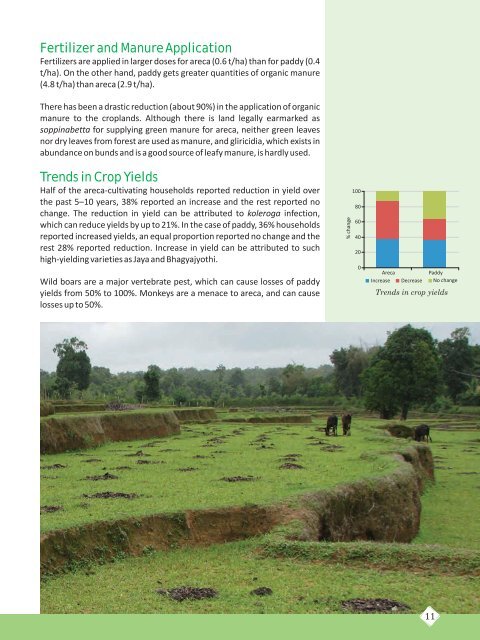2007 - Centre for Ecological Sciences - Indian Institute of Science
2007 - Centre for Ecological Sciences - Indian Institute of Science
2007 - Centre for Ecological Sciences - Indian Institute of Science
- No tags were found...
Create successful ePaper yourself
Turn your PDF publications into a flip-book with our unique Google optimized e-Paper software.
Fertilizer and Manure ApplicationFertilizers are applied in larger doses <strong>for</strong> areca (0.6 t/ha) than <strong>for</strong> paddy (0.4t/ha). On the other hand, paddy gets greater quantities <strong>of</strong> organic manure(4.8 t/ha) than areca (2.9 t/ha).There has been a drastic reduction (about 90%) in the application <strong>of</strong> organicmanure to the croplands. Although there is land legally earmarked assoppinabetta <strong>for</strong> supplying green manure <strong>for</strong> areca, neither green leavesnor dry leaves from <strong>for</strong>est are used as manure, and gliricidia, which exists inabundance on bunds and is a good source <strong>of</strong> leafy manure, is hardly used.Trends in Crop YieldsHalf <strong>of</strong> the areca-cultivating households reported reduction in yield overthe past 5–10 years, 38% reported an increase and the rest reported nochange. The reduction in yield can be attributed to koleroga infection,which can reduce yields by up to 21%. In the case <strong>of</strong> paddy, 36% householdsreported increased yields, an equal proportion reported no change and therest 28% reported reduction. Increase in yield can be attributed to suchhigh-yielding varieties as Jaya and Bhagyajyothi.Wild boars are a major vertebrate pest, which can cause losses <strong>of</strong> paddyyields from 50% to 100%. Monkeys are a menace to areca, and can causelosses up to 50%.% change100806040200ArecaPaddyIncrease Decrease No changeTrends in crop yields11
















